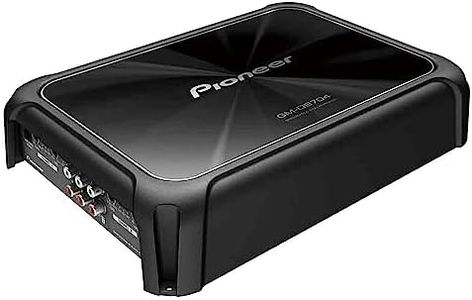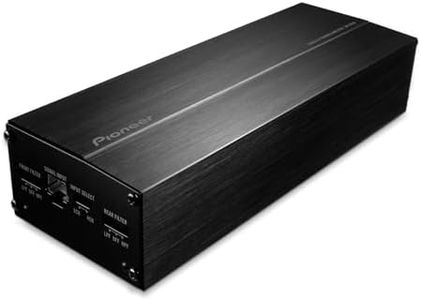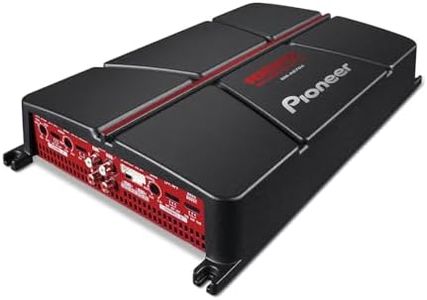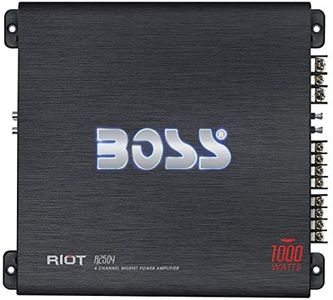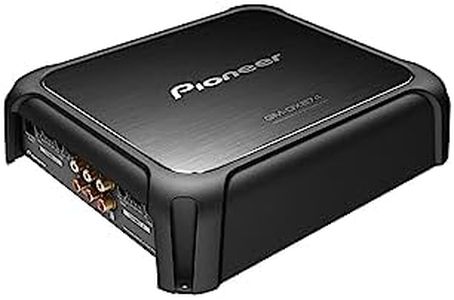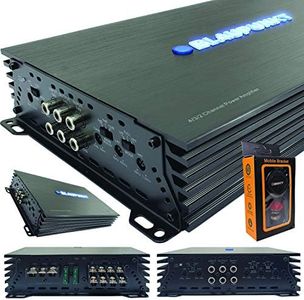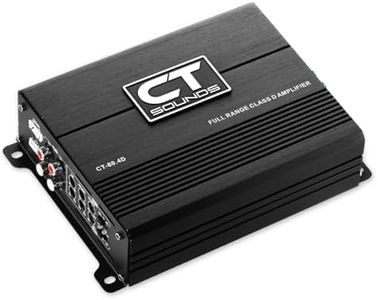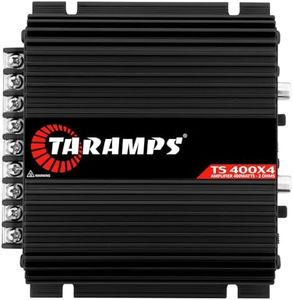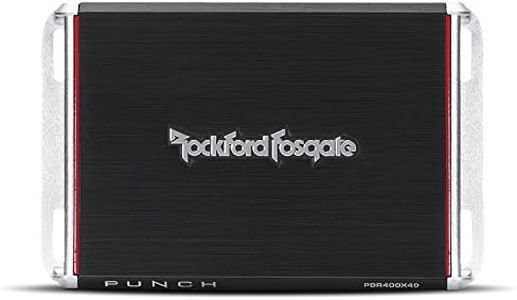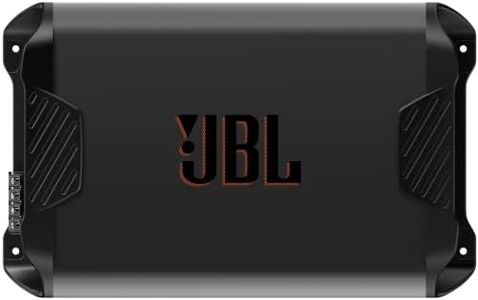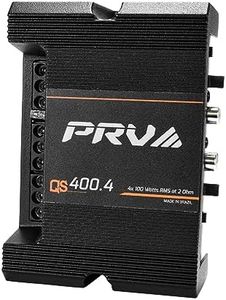We Use CookiesWe use cookies to enhance the security, performance,
functionality and for analytical and promotional activities. By continuing to browse this site you
are agreeing to our privacy policy
10 Best 4 Channel Car Amplifiers
From leading brands and best sellers available on the web.By clicking on a link to a third party's website, log data is shared with that third party.
Buying Guide for the Best 4 Channel Car Amplifiers
When choosing a 4-channel car amplifier, it's important to think about how you'll use it with your car's audio system. A 4-channel amplifier is generally used to power four speakers or, in some cases, two speakers and a subwoofer (by bridging channels). The key is to match the amplifier’s power output and features with your speakers and listening needs. Consider what type and how many speakers you will connect, the kind of music you enjoy, and whether you want the ability to expand your system in the future.Power Output (Watts RMS per Channel)Power output, measured in watts RMS per channel, tells you how much continuous power the amplifier delivers to each speaker. This spec is important because it should match what your speakers can handle, ensuring loud enough sound without distortion or damage. Lower values (20-40W RMS) are fine for upgrading factory systems with basic speakers, while higher values (50-100W RMS or more) suit aftermarket speakers that need more power or if you want to play music at higher volumes. Pick an amplifier whose RMS output per channel is within the recommended range for your speakers, not just the maximum they can handle.
Number of ChannelsA 4-channel amplifier means you can power four audio sources at once—typically the front and rear speakers in your car. The configuration is important because it allows you to control each set of speakers separately for better sound balance. Some people bridge two channels to run a subwoofer alongside two regular speakers. If you only plan to enhance front speakers or run a sub, you may also consider a different amplifier configuration.
Signal-to-Noise Ratio (SNR)The signal-to-noise ratio measures how much background noise the amplifier adds to your music signal. A higher SNR (usually above 80dB) means cleaner, higher-quality sound with less hiss or interference. For general music enjoyment and daily driving, aim for an SNR above 80dB. If you want the cleanest, most detailed sound and have high-end speakers, look for even higher SNR values.
Crossover ControlsCrossover controls allow you to tailor the sound sent to each channel by filtering out frequencies (high-pass and low-pass filters). This is important for optimizing sound quality and protecting speakers by sending them only frequencies they're best at reproducing. Simple systems may not need adjustable crossovers, but if you’re customizing speakers or adding a subwoofer, built-in, adjustable crossovers offer the most flexibility. Consider how much control you want over your sound.
Speaker Level InputsSpeaker level inputs let you connect the amplifier to a factory radio that doesn’t have dedicated RCA outputs. This feature is important if you’re keeping your stock stereo, as it makes your amplifier much easier to install without extra adapters. If you’re using an aftermarket head unit with RCA outputs, this feature is less important.
Size and Installation FlexibilityAmplifiers come in different sizes, so think about where you plan to install yours. Some are compact and can fit under a seat or in tight spaces, while larger models need more room but often deliver more power. Check your available space in the car and make sure the amplifier will fit comfortably without overheating.
Thermal and Overload ProtectionSafety features like thermal (overheating) and overload protection prevent the amplifier from being damaged if something goes wrong. This is important for reliability and longevity, especially if you play music loudly or drive in hot climates. Make sure the amp has some kind of built-in protection to ensure it shuts down safely in case of a problem.
